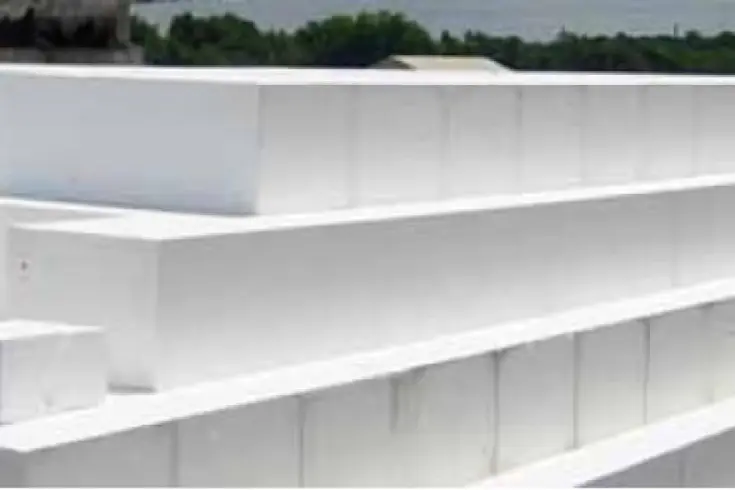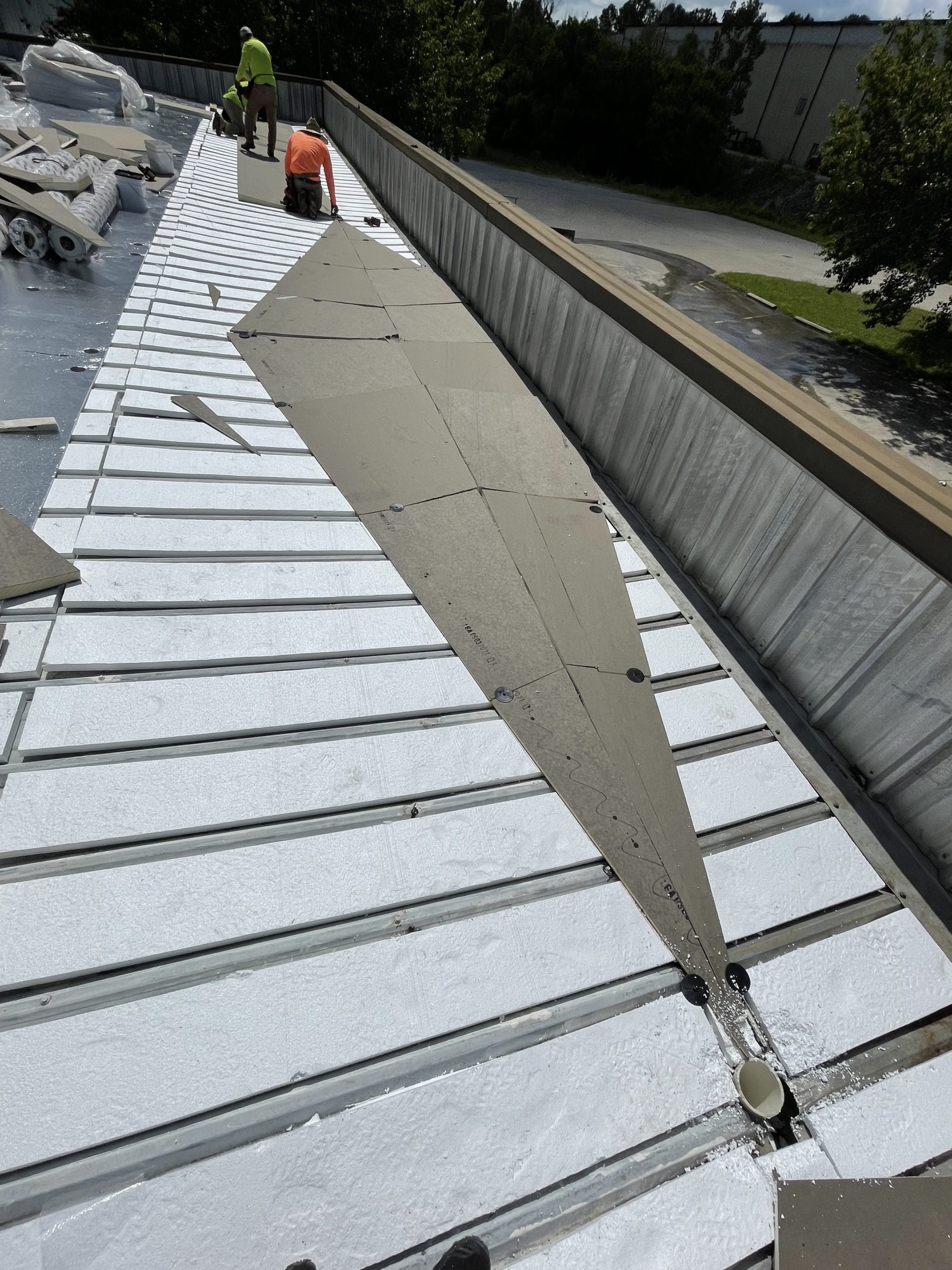Knowing which EPS density (or density of EPS) is the correct one for your project may not be as easy as it may seem. Depending on the application, there are different compressive resistance factors to satisfy the engineering requirements of a given project. EPS density is both a complex and easily understood discussion, fully dependent upon your level of technical expertise. What I am trying to say is. Picking a thickness from a chart is easy. Having a technical grasp on all that is involved with time-dependent mechanical (stress-strain) of EPS and other geosynthetics is more than complex. It has been studied in detail since the 1950’s. It is not a topic for light reading, nor for cocktail party conversation.
Let’s Talk Technical – The Findley Equation
There are two practice approaches to determining what engineers and scientists call time-dependent mechanical behavior of EPS. There is the long-standing favored method is referred to as the empirical approach. That means that sound, physically examined and patiently waited for enough evidence to determine the exact response or behavior the EPS in question experienced. As for EPS and now all geosynthetics, the shift to deterministic methodology is now the preferred approach to identifying said behavior. This mathematically determined practice is commonly referred to as the Findley Equation. That is almost correct, the time-dependent component of strain is modeled using a mathematically based power-law function. However, the “exact” Findley equation requires multiple parameters, as many as five. This careful examination has not been performed for geosynthetics, nor for most non-polymeric and polymeric materials.
An excerpt from J. Horvath’s study helps explain why this is important to understand the difference.
EPS-block geofoam has been and is the most commonly used geofoam product worldwide. However, the presentation is completely general so the Findley equation procedure can easily be applied to traditional planar polymeric geosynthetics such as geogrids, geomembranes, and geotextiles. Also included in this report is a comparison between the Findley equation results for EPS-block geofoam and a simpler power-law model proposed in the 1980s by the LCPC in France. The results presented raise new questions about the accuracy of the LCPC power-law model and its continued use in practice.
The long-term validity of a simpler power-law-function that uses fewer material parameters compared to the Findley equation has not been demonstrated in general. This report describes the components of the true Findley equation as well as some of the commonly used simplified equations derived from or related to the Findley equation. An illustration of how to apply the Findley equation to geosynthetics is made using compressive-creep-test data for generic block-molded expanded polystyrene (EPS-block) geofoam. EPS-block geofoam has been and is the most commonly used geofoam product worldwide. However, the presentation is completely general so the Findley equation procedure can easily be applied to traditional planar polymeric geosynthetics such as geogrids, geomembranes, and geotextiles. Also included in this report is a comparison between the Findley equation results for EPS-block geofoam and a simpler power-law model proposed in the 1980s by the LCPC in France. The results presented raise new questions about the accuracy of the LCPC power-law model and its continued use in practice.
Manhattan College Research Report No. CE/GE-98-3
To further illustrate, here is the abstract from yet another scientific study performed by the University of Waterloo, Ontario, Canada, provides some specific densities and their measurements.
Polymeric foam materials are widely used for impact protection and energy absorption, for which advanced design and modeling requires appropriate material characterization data and constitutive models. The compressive mechanical behavior of three common polymeric foams (expanded polystyrene, high-density polyethylene, and polyurethane) has been measured at strain rates ranging from 0.0087 to 2500/s. Although a large amount of compression data is available in the literature, most of this data only addresses strain rates up to 250/s, with higher rate data limited to modest levels of compression. This represents a significant deficit in the current knowledge since many applications are leading to the use of foams at high rates and significant total deformation. The material characterization was accomplished using a standard compression test device and a drop tower apparatus to achieve rates up to 100/s. A polymeric split Hopkinson pressure bar apparatus was used to achieve strain rates from 500 to 2500/s. This data has been used to investigate a common foam constitutive model, and shows that strain rate effects become more pronounced at rates above approximately 1000/s.
DRDC Valcartier, 2459 Pie IX Blvd. North, Val-Belair, Quebec, Canada G3J 1X5
Department of Mechanical Engineering, University of Waterloo, 200 University Avenue West, Waterloo, Ont., Canada N2L 3G1
What This Means?
Basically, what this means is that although the Horvath report was written in 1998, methodologies have yet to settle on one approach to determining EPS density, for intents and purposes. What this also means is that it is critical to follow the specifications of the engineers who make the decisions based on the information collected from accepted practices. The University of Waterloo’s findings reflect more accurate information as compared to Horvath’s.
What About Cost?
As our downloadable pdf documentation illustrates, the difference comes in a variable density. You can access them throughout our website.
Other Information
These same empirical and deterministic approaches are used for both EPS and EPS concrete. What is known is that because of the EPS beads, the strength of the concrete is prone to breaking down. A joint study performed by Shanghai Jiaotong University, Shanghai, and Texas A&M University demonstrates the effect of EPS and steel fibers and their impact on the strength and composition of lightweight concrete made with EPS.
The research showed that EPS concrete with a density of 800–1800 kg/m3 and a compressive strength of 10–25 MPa can be made by partially replacing coarse and fine aggregate by EPS beads. Fine silica fume greatly improved the bond between the EPS beads and cement paste and increased the compressive strength of EPS concrete. In addition, adding steel fiber significantly improved the drying shrinkage.
Department of Civil Engineering, Shanghai Jiaotong University, Shanghai, 200240, PR China
Department of Civil Engineering, Texas A&M University, College Station, TX 77843, USA
Although this information on EPS density may seem superfluous to the discussion, it points to the fact that Expanded Polystyrene has undergone significant examination and global interest in understanding the qualities and uses of the product.
As engineers and scientists continue to examine the effectiveness of EPS in construction, improvements and adjustments will continue to impact our industry. It is with great pride that we at Poly Molding LLC provide the finest products for construction purposes for both commercial applications as well as residential uses.
If there is anything that we can do to make you a more fully informed consumer, please reach out to us and we will do our best to fill the need.







